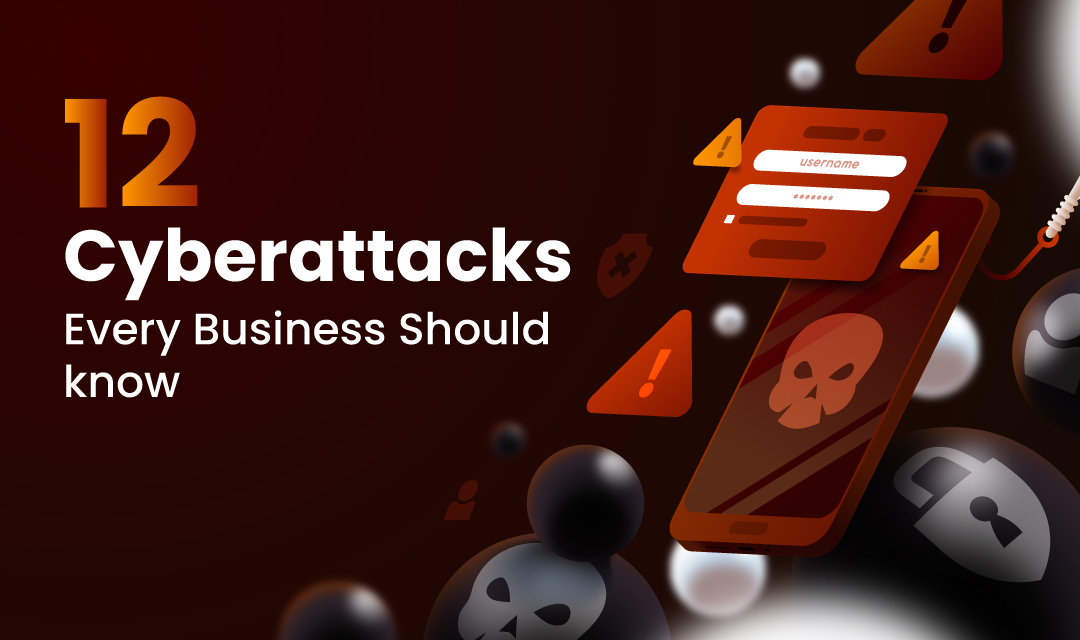
Cyberattacks should not be taken lightly, as fraudulent techniques are constantly changing and improving. Last year alone, 1,001 companies and about 155.8 million users experienced identity theft. To avoid falling into this trap and protect your business, it's helpful to know the most common types of cyberattacks.
1. Data leakage
Leackage of sensitive company information can occur due to both cyberattacks and leaks by former employees. In addition, leaks can also be accidental, such as when you lose your phone.
2. Phishing
A phishing attack is carried out to steal sensitive information and gain access to credentials. The sender masquerades as a known company. Usually, he contacts the victim via email, but in some cases via SMS, social networks, messengers, and phone calls.
3. CEO fraud
This type of cyberattack, also known as targeted phishing, targets a specific victim, whose information has been previously collected from the corporate website, social networking sites, etc. The scammer usually contacts a subordinate on behalf of a manager who can make money transfers. In the correspondence, the attacker asks the victim to transfer a large amount, as if to close a business deal. The employee thinks the order is coming from his superior, and agrees.
4. Human Resources Fraud
A cybercriminal impersonates a company employee and asks for a payroll transfer to another account, which, of course, is controlled by the fraudster.
5. Sex-extortion
The victim receives an email telling him that personal information and camera footage have been stolen from his phone. The scammer demands a certain payment, usually in cryptocurrency. Otherwise, the attacker threatens to send the data to all the people in the victim's contact list. To be more convincing, some personal information may be mentioned in the correspondence.
6. Attacks on the corporate network
The purpose may vary from obtaining confidential information to damaging the company's image. Sometimes, it is also done for more recreational purposes, such as adding funny or obscene images to a website DoS (Denial-of-Service) attacks are also widespread, making it impossible for users to buy from an online store or view a page. Hackers often use a compromised site for other crimes as well. Poor web configurations, the presence of vulnerabilities, and even errors in design - all this only makes it easier for fraudsters to work. That's why any company's website needs a security policy.
7. Ransomware
The ransomware closes access to corporate information, usually through encryption. It is one of the most common and effective attacks. In some cases, the data can only be recovered after paying the required ransom.
8. Fraud of false technical support
The company's technical support warns the staff about the errors detected on the corporate devices. This fraud scheme can compromise the security and privacy of the whole organization and the individual employee's device.
9. Malware emails
An email that looks like an invoice, a purchase coupon, or any other decoy can be the source of malware that spreads throughout the organization. The dangerous file can be transmitted either through an attachment in the email or through a link.
10. DoS attacks
Cybercriminals send multiple requests to a particular server at the same time until they shut it down. This causes the site or online store to crash and users can't access it until the company unlocks it.
11. Adware attacks
Ads are shown to the user, the revenue from which goes to the cybercriminal. Usually, the victim's device is infected via freeware or pirated programs. Although this is the least aggressive attack of all the attacks represented, it still causes inconvenience to the user.
12. Supplier impersonation attack
As the name suggests, a company receives an email from a provider who appears to be a criminal. The aim is to receive a money transfer, which, of course, will never reach its destination.
Conclusion
Among hundreds of cyberattacks, we described the 12 most common attacks targeted to business users. Understanding types of known attacks, and preventing from falling victim to such attacks is important in protecting your company's assets. Whenever there is a large sum of "money transfer" involved, extra caution should be given to ensure the transaction is legitimate.



Comments (0)
No comment